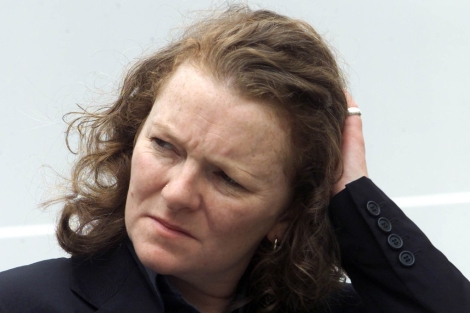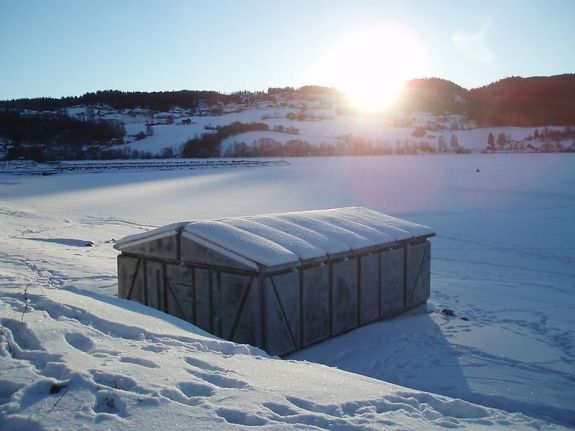In fact, Derek Hill, like his insightful sympathetic biographer Bruce Arnold, never aspired to be Irish.
"We persisted," Arnold writes, "in retaining English social and loyalty convictions, in firmly rejecting the Irish belief that sympathetic English residents could be made 'more Irish than the Irish', yet managing to get close to the heart of the country and its people in a variety of different ways."
From the age of 38, Hill made Ireland the centre of his artistic life and appreciated what made it different. I see him as akin to Robin Flower and George Thomson, two Englishmen, who, in the early 20th Century, rescued
from historical oblivion the Irish-speaking culture of the Blaskets.
Hill's Ireland was further north along the wild Atlantic coast, in north-west Donegal and Tory Island. He was, according to Arnold, captivated by "the green depths of Irish scenery, the expansive and ever-changing skies, the light over the Atlantic and the dark shadows of cliffs and ravines around the coast".
In 1955 he acquired a former rectory near the village of Churchill on the edge of Lough Gartan, where he spent months every year. He made regular trips to Tory, where he had a hut, and painted some of his best landscapes. He counted those times as the happiest of his life.
"It gave me," he said, "a wonderful chance to get away and be myself and just paint."
He struck up friendships with some islanders and encouraged the emergence of a school of artists among them. His one false step was to buy potatoes one year to replace their lost crop. Pride was offended.
On the mainland, Hill made himself part of his local community, even attending ceili dances, and enjoyed a warm relationship with neighbours and employees. Portraits of some of them are among his best.
A food-loving bachelor of independent means, probably homosexual in orientation, his cook and housekeeper for 35 years, Gracie McDermott (nee McDaid) became the anchor of his Irish life and probably his most trusted friend. Their relationship is a touching tale.
Through his friendship with Alfred and Clementine Beit, Hill became a member of the council of the Wexford Opera Festival, which he attended regularly for 40 years and endowed generously.
Outside this Irish life, there was a lot of emptiness and disappointment. The British artistic establishment and critics dismissed Hill's landscapes as out of date because they were too representational. Their galleries refused to buy his portraits, although the best of them (nearly all of men) are truly memorable.
He prided himself on establishing a rapport with his sitters and laying bare their character and mind. His depiction of John Charles McQuaid as a cross between a Renaissance prelate and a crafty Cavanman, which hangs in St Vincent's Hospital, is a fine example.
Born into the 19th-Century industrial plutocracy, Hill spent much of his life cultivating the more ancient aristocracy, including the royal family, especially those with an artistic bent.
His friendship with one royal, whose portrait he painted, almost cost Hill his life. He was a house guest at Earl Mountbatten's Sligo abode on the August weekend when Mountbatten was blown up in his boat. Hill would almost certainly have been on the boat had he not left to go to Ballyshannon to receive a poetry prize.
A mighty traveller, Hill spent a lot of time keeping in touch with people. Sadly, few of what Arnold describes as "his wonderful letters and even better postcards" seem to have survived to assist in bringing these friendships to life.
Affable and kindly, Hill was also petulant, demanding, and rather childish. Sociability did not make up for a lack of intimacy. Arnold thinks that he was a lonely man.
This beautiful book contains handsome reproductions of Hill's paintings that will enable the reader to appreciate his life's work. It is splendid that he found fulfilment in Ireland and that his home in Donegal, which he gifted to the nation, goes on as an art gallery to provide inspiration for the people among whom he did his best work.
Sunday Independent
Arthur Derek Hill nació en Southampton en 1916 en una familia acomodada.
Tenía dos hermanos mayores y, al igual que ellos, asistió al Marlborough College, donde demostró interés y talento para la pintura. Su padre lo persuadió para estudiar diseño de escenarios en lugar de pintar, ya que eso tenía mayores posibilidades de empleo. En consecuencia, se matriculó para estudiar diseño de escenarios en Munich a la edad de 17 años.
Más tarde estudió con Paul Colin en París y con el Dr. Josef Gregor en Viena. El Dr. Gregor le presentó a Tairov, el director del Teatro Mamemney en Moscú, donde pasó seis meses en 1936. Después de trabajar en Moscú, se tomó un tiempo para viajar al este a través del Trans Siberian Express a Japón, China, Bali y Siam.
A partir de 1947, Hill pasó mucho tiempo en Italia.
Conoció al historiador de arte Bernard Berenson, que admiraba su trabajo y se convirtió en una figura paterna para él después de la muerte de sus propios padres. Pasó muchos inviernos en la casa de Berenson, la finca I Tati, a las afueras de Florencia.
Durante su tiempo en Italia conoció a muchos artistas italianos, entre ellos Antonio Music, Renato Guttuso, Bruno Saetti y Giorgio Morandi. También conoció al estadounidense Henry McIlhenney, que trabajaba en la Academia Americana en Roma. McIlhenney era dueño del castillo Glenveagh en Donegal en ese momento e invitó a Hill a visitarlo allí en 1949. Hill regresó una y otra vez a Donegal y en 1953 compró la casa de la antigua rectoría de St Columb, ahora Glebe House, y se mudó al año siguiente.
Glebe House fue el hogar principal de Hill desde 1954 hasta 1981, aunque continuó viajando mucho durante esos años.
Fue nombrado Director de Arte en la Escuela Británica de Roma, donde conoció a artistas como John Bratby y Joe Tillson, así como a los más famosos Francis Bacon, Henry Inlander, John Craxton y Keith Vaughan.
En 1958, Derek Hill visitó la Isla Tory por primera vez y quedó fascinado por la luz y el paisaje accidentado. Alquiló una cabaña allí y pasó muchas semanas pintando cada verano. Su ejemplo y estímulo condujo al desarrollo de toda una escuela de pintura ingenua, los pintores de Tory Island, de los cuales el artista más conocido es James Dixon.
La carrera de Hill como pintor, particularmente de retratos, floreció y se le encargó pintar a muchas personas famosas, algunas de las cuales visitaron St Columb's. Sus retratos incluyen los de Yehudi Menuhin, Arthur Rubenstein, Sir Michael Tippett, Wilfred Thesinger, Erskine Childers, Garrett Fitzgerald, Tony O'Reilly, Prince Charles, Lord Mountbatten, Laurens van der Post, Arzobispo McQuaid y Cardinal Heard. Su retrato de Anthony Eden está en la colección de la National Portrait Gallery de Londres.
En 1982, Hill dio su hogar aquí en Lough Gartan y su contenido al pueblo irlandés. Compró una cabaña cerca pero trasladó su base a una casa familiar en Hampstead en Londres. Continuó pasando tiempo en el área de Gartan y en la isla Tory hasta su muerte en Londres en julio de 2000.
En 1937, Hill regresó a Inglaterra para trabajar como diseñador de vestuario en Sadlers Wells, pero al poco tiempo regresó a París. Animado por Edward Molyneux, modisto y coleccionista de arte impresionista, alquiló un antiguo molino en el Loira y comenzó a pintar en serio. Cuando estalló la guerra, regresó a Wiltshire en Inglaterra como objetor de conciencia y trabajó como trabajador agrícola. Todavía pintaba en su tiempo libre y conoció a muchos artistas, incluidos Mary Kessell y Victor Pasmore.
En 1943, a la edad de 27 años, Hill hizo una exposición individual en Londres en la Galería Nicholson y también organizó exposiciones del trabajo de otros artistas, incluido Degas. En 1946 Hill pasó un año pintando en Irlanda. Tuvo relaciones en Co Wicklow, pero principalmente pintó en Galway, Mayo y Achill Island, donde pintó con el artista irlandés Louis LeBroquey.


 Photo by Tim Schenk
Photo by Tim Schenk Photo by Timothy Schenck
Photo by Timothy Schenck Photo by Timothy Schenck
Photo by Timothy Schenck Photo by Timothy Schenck
Photo by Timothy Schenck Rachel Whiteread’s Water Tower (1998) at the Museum of Modern Art. Photo: Courtesy of smokeghost via Flickr.
Rachel Whiteread’s Water Tower (1998) at the Museum of Modern Art. Photo: Courtesy of smokeghost via Flickr.










